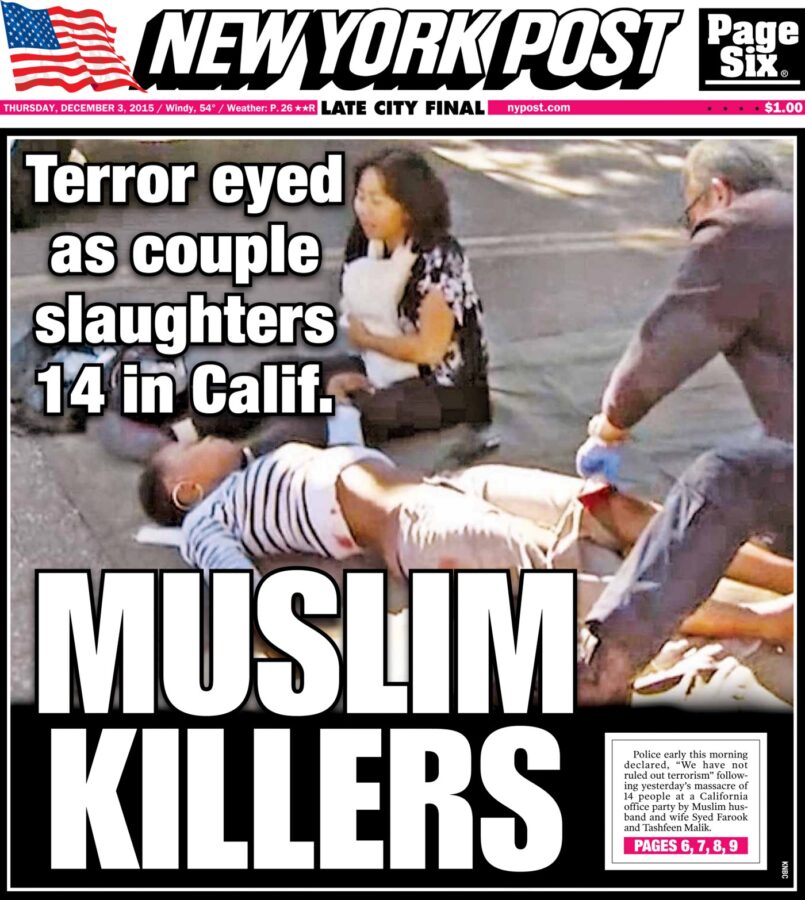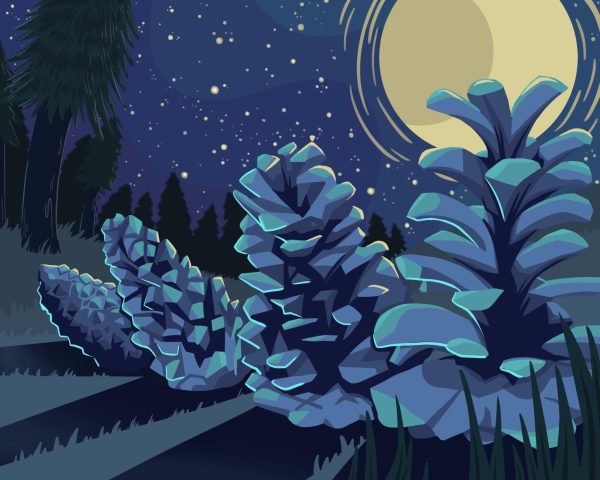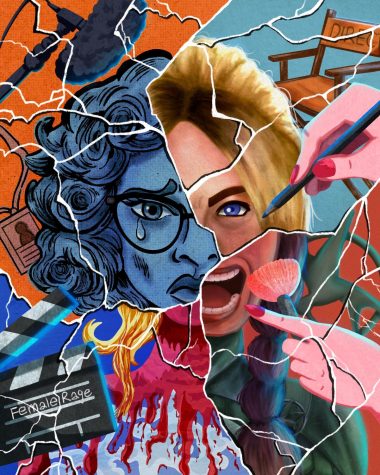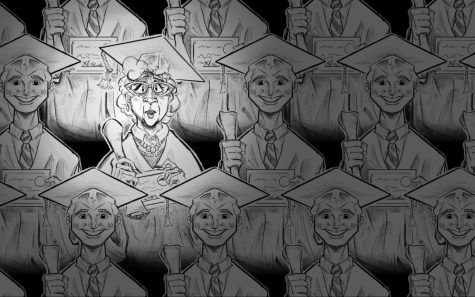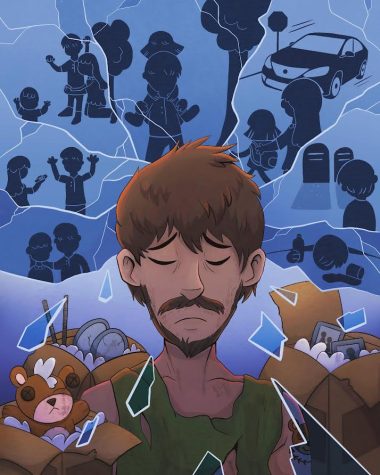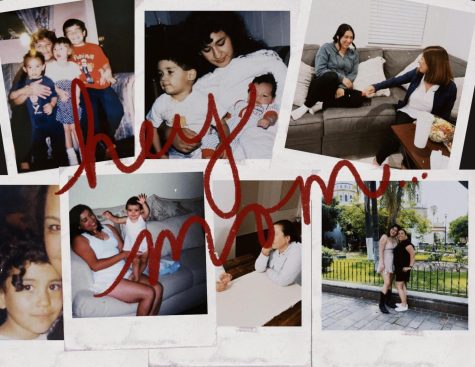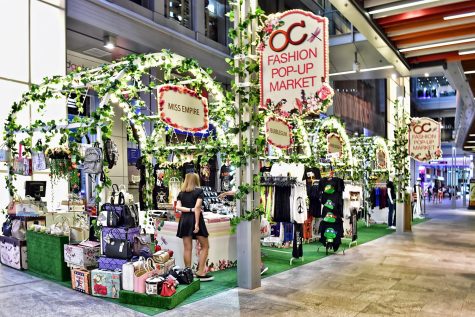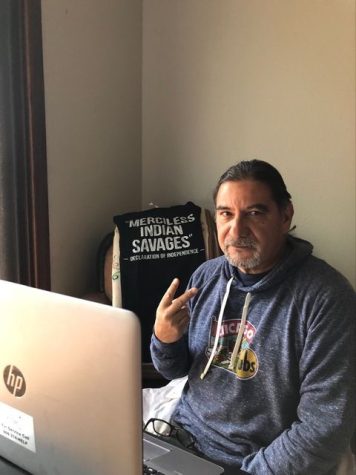White Journalism
We’re not Racist. We’re the Media.
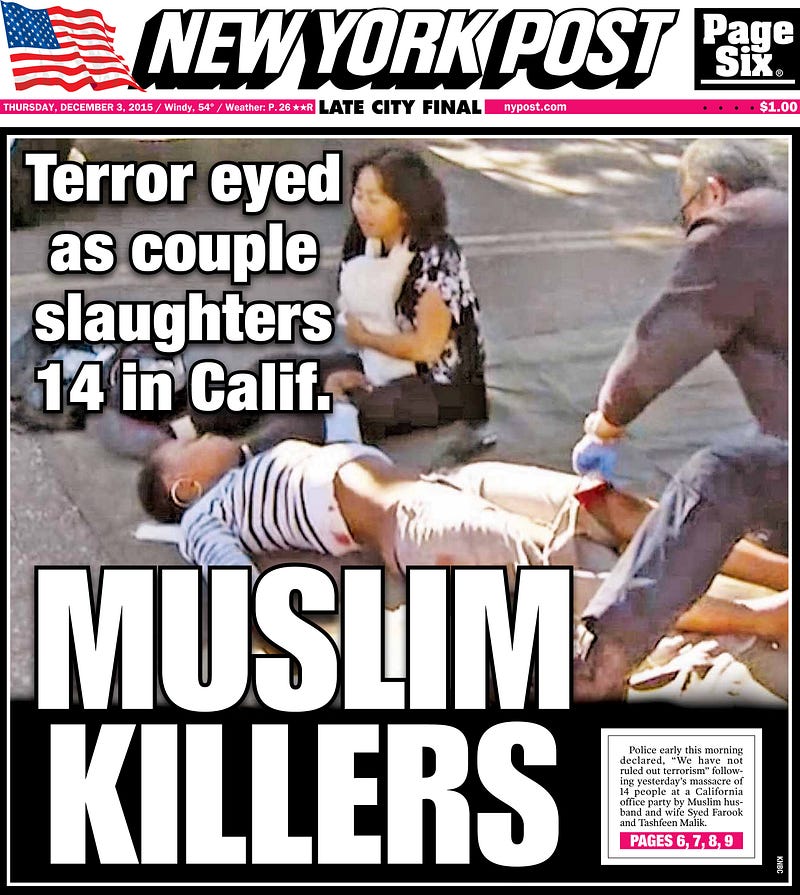
White Journalism
We’re not Racist. We’re the Media.
She’s a slender woman with long black hair. It’s perfectly straight and blowing slightly in the wind as I meet her in the parking lot. Her smile is warm and pleasant and nothing about her seems dangerous or malicious. Her eyes are focused on mine while she stands with confidence as we introduce ourselves. I knew her sister Kirin when she was a student editor. She smiles wider and brightly says, “I’m Beena. It’s great to meet you, and I am so glad to be here for this.”
As we walk back to the newsroom, I explain how this is going to work. The editors of SAC.Media and Substance Magazine have set a round-table discussion to hear what people of color think and feel about their portrayal in the media. Without losing the smile, I can see she is upset, and I understand why. I mentioned that one of the topics will be GOP frontman Donald Trump and the comments he has made about Muslims. Her smile is gone. Her face, still beautiful, is now lit with passion — Beena is Muslim.
We walk into the newsroom and are greeted by the staff who introduce themselves. Everyone is eager to hear what she and our other guests have to say. Our goal was to share the voices of people who have experienced prejudice and to try and better report on topics we ourselves may not be familiar with. What we got instead was a story of how the media aid in the attacks; how they are fueling a fire so dangerous it kills and divides. A fire that brings fear by just being mentioned.
It is clear that Beena Alvi, a 24-year-old transfer student from Mt. SAC and graduate of California State University Long Beach, is a talented, well-educated woman. She speaks articulately and is careful with her words; she knows the effect they can have. Alvi joined the discussion to speak about how the rise of Islamophobia has instilled fear into her and her family. Alvi, a Muslim woman whose family is from Pakistan, has traveled throughout the Middle East and worked and lived in Brunei as a research assistant at University of Brunei, Darussalam. She said these recent attacks by politicians and the reporting of this vitriol in the media has affected her personally.

“[I’m scared] when I think of my father going to the Mosque twice a week, and my mother, a store manager … they all know she’s Muslim. That kind of fear has crept into my life and it is very disconcerting.”
Alvi also worries about her sister, Kiran, a graduate of USC Annenberg and Columbia University who now works as a media producer, and her husband, Omid, a law student, who now live in Washington, DC. As a young Muslim couple who have traveled throughout the Middle East and lived and worked in Tunisia, Beena said she fears for them as well.
She added that it helps that her family’s name is not traditionally Muslim and that because she has lighter skin, she has escaped the brunt of racism and Islamophobia. Still, she said it hurts just the same.
“When we go out now it’s with caution. We kind of try to keep a lower key than we normally would. It’s very frustrating as an American citizen coming from a family of American citizens to think that I’m home but I feel like I’m not in my own home.”
The atmosphere of the discussion has now turned from a tone of genuine curiosity to one comparable to that of a wake; there is a feeling of pain and fear that could be cut with a knife. Even just talking about the subject seems to evoke a sense of hurt that starts in the pit of the soul and escapes through the eyes in the form of tears. All around the table hardened student reporters are breaking down. Our adviser is crying, unable to hold her emotion back. Beena’s voice is shaking as she wipes away tears, and then she’s done. We stop for a moment to take it all in.
As student journalists who hope to work in media, and as graduates who are already working in the media, it is often difficult to report with empathy and compassion when the emphasis for a successful media model is put on how many hits are garnered for a story. We observe professional media doing everything possible for that ‘click’ — outrageous attention grabbing headlines that attack groups of people, trending stories that fuel the vitriol and hatred from political candidates, and generalizations of groups of individuals based on race and religion.
What we have now is a brash wave of Yellow Journalism, a term coined in the mid-1890s to characterize sensational journalism that presents little or no legitimate well-researched news and instead uses eye-catching headlines to sell more newspapers. This type of journalism veils itself in the fringe ideals that many Americans still harbor deep inside like a cancerous polyp ready to infect the body at a moment’s notice. What we have now — at least where the media are concerned — is White Journalism.
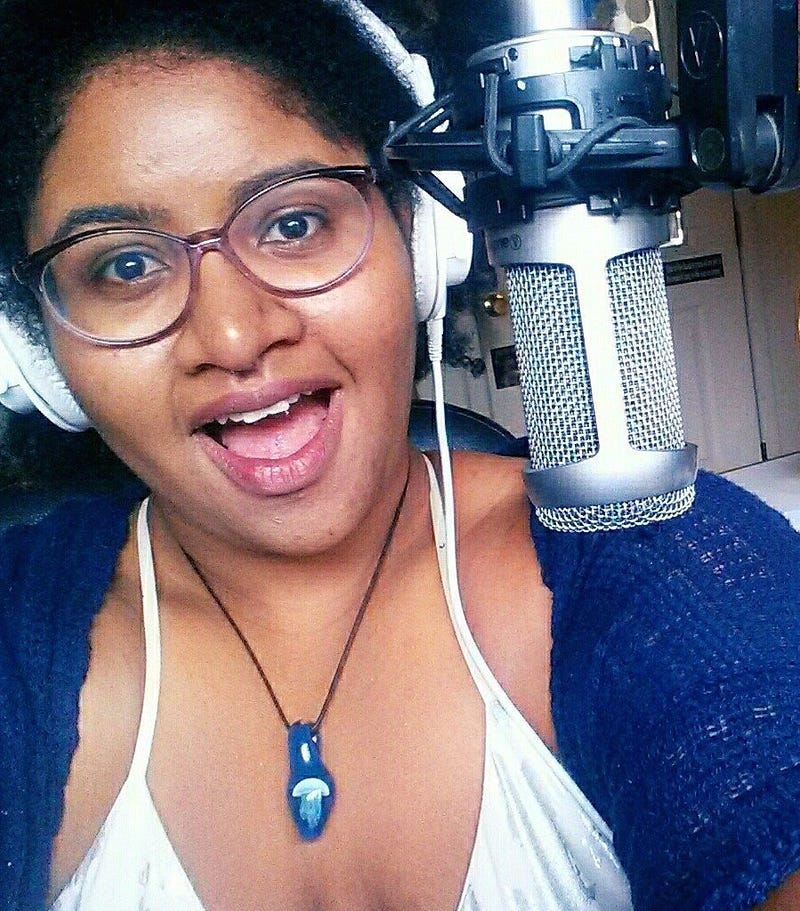
KSLG radio host, Humboldt State University graduate, and former Substance Magazine editor-in-chief Sabina Gallier, 27, said that the way people of color are portrayed in the media has led to a type of social awareness and protection-based isolation. Gallier said that in order to accurately be depicted in the media, people of color must do the depicting themselves.
“I believe that there are a variety of problems with the way the media portrays people of color. Our low points are highlighted and broadcast at a much higher rate than our achievements.” She added that it is rare to see the stories about the youth of color making breakthroughs in science or health.
“ You have to dig deep into lesser known outlets and specialized news sources to even scratch the surface of stories like that. We are portrayed as the gangbangers, the drug abusing problem children and rioters while white individuals are portrayed as good-people-gone bad, mentally ill and protesters.”
Gallier, who said she dedicated 100 percent of her academic career to journalism in order to get a job in broadcast, stands with the individuals of the 2015 University of Missouri protests who didn’t want the media there.
“When you see how people of color are represented in larger corporate media, why would you trust them?”
At the 2015 protests at the University of Missouri, protesters established a “media-free zone.” At the space, faculty and others were shown to force media off the site while one professor — who later resigned and is now facing charges— threatened to bring “muscle” to remove student media.
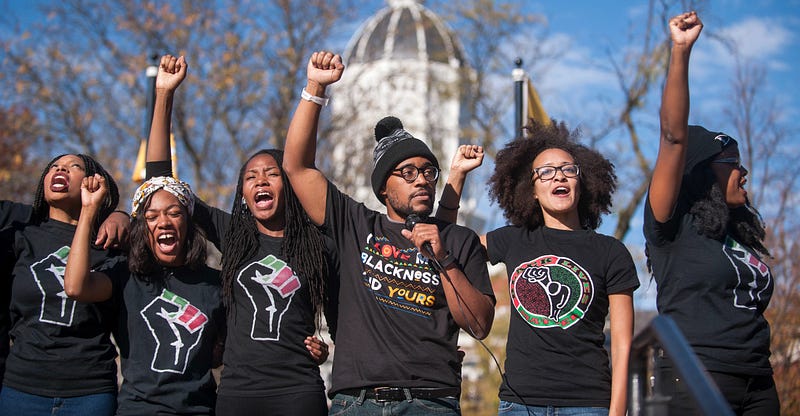
“When people ask angrily why various people of color need their own news channels or shows, the answer is simple: because the mainstream media doesn’t know how to fairly report stories about us so we’ll do it ourselves,” Gallier said.
Mt. SAC student and film and television major, Axel Richardson, 21, said that as a black man he has had various encounters that have left him upset and hurt. He recalled an incident when he and his then girlfriend were sitting in the parking lot of a movie theater when they were informed by security that they couldn’t be there.
“Security came up to us and told us we couldn’t be there because there was a kindergarten across the street [so we left.]”
Richardson said that a week later, they were at a park sitting in their car talking when the police arrived.
“We were just sitting there and the officer told us, ‘Oh you can’t sit here; it looks very suspicious if you just sit here especially because you’re not under a street light.’”
Richardson said that as a young black man growing up in Chino Hills, Calif. where the demographic is more than 60 percent white and only 5 percent black, he was always told by family not to dress or act a certain way as to not be perceived by others in a negative light.

“My aunt wouldn’t let me go to a good amount of parties because most of them were in white or Hispanic neighborhoods. [She said] those neighborhoods tend to have shootings, and that I’d be a black kid surrounded by Mexicans if something were to happen.”
Richardson said that growing up, his aunt’s rules irritated him because his friends were going to parties that he could not attend. However, he said now that he is older, he understands his aunt’s perspective. “[She said] I’d either be a statistic of a black kid who got shot or I’d be jumped by a bunch of Mexicans.”
Gallier has a point when she says that people of color have a hard time trusting corporate media. One only has to look at the news coverage during the aftermath of Hurricane Katrina when all eyes in America focused on the tragedy and human suffering that the people in Louisiana faced. What the world witnessed during those days and weeks was horrifying, not only because of the loss of life, but also because of the way the media depicted people of color in comparison to white people. Take the photo below.
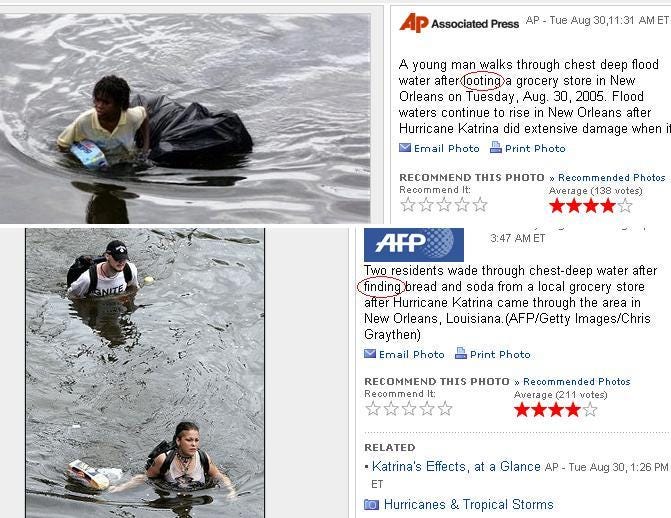
The person of color is described as “looting” a grocery store while in the other photo, the two individuals are described as “finding” food. Just do a Google image search of “Katrina looters” and you will find pages upon pages of black citizens in squalor, rummaging through empty stores. You will also see images of white military, local citizens carrying semi-automatic rifles next to signs that read “looters will be shot.” What these images lead one to believe is that black people are criminals who take advantage of a situation while white people are there to defend and protect from said criminals.
A decade after, there is still a polarization in the way the media handle people of color regarding crime, tragedy, and daily life. Take the prevalent issue of terrorism at the hands of extremists.
Republican frontman Donald Trump has notoriously used the ideology — or idiocy — that all Muslims are terrorists (while white gunmen are mentally ill) to boost his numbers. Trump has stated in public multiple times that he is for a “total and complete shutdown of Muslims entering the United States until our country’s representatives can figure out what is going on.”

Following suit, many others have jumped on the bandwagon, attacking Muslims and using their religion as a scapegoat.
The only way to keep out Muslims terrorists, is to keep out Muslim immigrants.
— Ann Coulter (@AnnCoulter) January 13, 2016
Although it is true that there have been incidents where people claiming to be Muslim have committed acts of terror, it isn’t accurate, fair or even logical to claim that all Muslims are terrorists. On the opposite end of this, the coverage of the Oregon terrorists’ occupation of a wildlife refuge on federal land has received what can be considered tame coverage.
The people involved, all white men being called a militia, invaded the space in protest armed with semi-automatic weapons with some stating that they are prepared to die to defend their rights. However, neither Coulter nor Trump nor any of those raising voices against “Muslim terrorists” have yet to speak out against this form of domestic terrorism. As a matter of fact, as the media cover the standoff, no mention of the group as terrorists has yet to come out on any major media outlet.
BREAKING: Oregon standoff: Militants say they'll reveal exit plan Friday https://t.co/4BDEo3dSlB #OregonStandoff pic.twitter.com/BJigUTm7GP
— Southern Poverty Law Center (@splcenter) January 12, 2016
If this isn’t a double standard, then what is?
As the discussion continues, more stories of hurt, prejudice, and anger fill the room.
SAC Media Spanish Language News Editor, Maria Mejia, tells how she has experienced firsthand the effects media coverage of undocumented people has had on a majority of Americans. Mejia said that she feels she is judged every time she goes out with her family because of the way they are perceived. Mejia arrived in the United States three years ago.
“I just feel like every single day, because I still have a thick accent, when I say something, people are just like, ‘What? What are you saying?’ They call me Mexican just because I am Hispanic. I’m not. I’m El Salvadorian. Or they call me illegal. And not just me, my family as a whole.”
Yunuen Bonaparte, a 26-year-old former Substance photo editor and current Cal State Fullerton communication major who works as photo editor for the student magazine, Tusk, finds the way the media portray undocumented people “disturbing.” Bonaparte came to America when she was 12 and has been undocumented since.
“I came to the U.S. at the age of 12 in 2002 with my mom and two younger siblings,” Bonaparte said. “I was brought in by a female smuggler in between the front seats of an Astro Van. I’m undocumented, however I’m under the D.A.C.A which grants me immunity from deportation, so I’m allowed to live and work in the U.S.”
Being undocumented and part of American college media, Bonaparte said that she is well aware of how the media portray people who are undocumented.
“I am definitely, in a way hyper-aware of how undocumented people are portrayed in the the media. For the most part, the right wing media portray us as criminals that are taking what ‘Americans’ are entitled.”
Bonaparte said that politicians spew hatred and the media fuel the fire.
“When you have Fox News making up numbers and telling their viewers that human beings are ‘illegal,’ you get people to hate on people. Those that are struggling because of the economy, or their own circumstances, find the perfect scapegoat to blame for their issues. Immigration has always been that scapegoat for politicians who fire up the hate on those who do not understand why things are the way they are.”

Despite her long exposure to the media’s negative portrayal of undocumented persons, Bonaparte said that it still makes her angry to witness.
“My first response is anger, but I would be naive to think that it’s just plain anger, so I have explored that anger throughout the years, as ridiculous and self-aware as that sounds. This aspect of myself and other issues I carry turned into depression really fast.”
However, Bonaparte said those sentiments have evolved since pursuing higher education. Using what she sees and experiences, she has converted prejudice into motivation.
“Now as I pursue higher education, I still feel angry — but it’s not like before. Now I feel angry at the system that keeps cementing ignorance on the issue. Now the anger turns into determination to better myself so that what I do means something and hopefully create a change, as minimal as that might be.”
Tianna Winters, a 29-year-old former Mt. SAC journalism editor who now attends the University of Las Vegas and who served as editor-in-chief of the university’s student newspaper Rebel Yell, said that she has noticed a trend in the way televised media report on violence and mass shootings in regard to race. Winters pointed out that media have said that they won’t name mass shooters, such as the man who killed two reporters on air; however, whenever the mass shooters are Muslims, their names are released without hesitation.
“I feel that ethics have recently been shot to hell and the perfect example would be how reporters went into the apartment of the[San Bernardino] shooters. The backlash was appropriate.”
Winters said that with issues such as the shooting of Trayvon Martin or the unrest in Ferguson, the need to examine the situation goes both ways. Trayvon Martin was not a thug, yet the news media was flooded with stories that Martin was once suspended from school for possession of a plastic baggie with marijuana residue on it.
“I have yet to meet an aggressive pothead, unless he did something like PCP which makes you aggressive…okay maybe a little relevant but the autopsy showed he only had tea and a bag of skittles. The media focused on the most insignificant details instead of getting off their asses and doing actual research,” Winters said.
Winters is correct. Google Trayvon Martin and numerous stories will pop up about his Facebook page and his tweets. In so many cases he was portrayed as thug. The Daily Caller who published a list of Martin’s tweets — his handle was @NO_LIMIT_NIGGA — that they claim “reveal him as a posturing teenager rather than a choirboy.” The story notes that the photograph attached to his social media account depicts Martin “smiling, gold-toothed, into a camera in front of an electronic dartboard.”

Winters said she empathizes with the black community’s reactions to police presence and biased media coverage when people of color are depicted in situations where they are demonstrating or surviving, such as the Ferguson protests after the shooting of Michael Brown.
“Do I understand the frustrations of the community? Absolutely. But the police treated the area like Syria. War tanks, tear gas, but this is America. At the same time you have the entire Black community shut down when Tyshawn Lee was shot in an alley way. Justice is justice. We cannot scream justice when it isn’t justice for all.”
Winters said that perhaps racism is so embedded in people’s lives that they don’t understand they’re being racist, at least consciously. According to Winters, it is important to understand that when people get upset for being called racists, they may not be aware that they are.
“That’s why people say that everyone is so easily offended these days. It’s called progress. I’m sure during the Civil Rights Movement people were like, ‘It’s been like this for years, why are people so upset about it now?’ Because progress. We learn. We grow. And we understand it isn’t okay anymore. To understand you have to make people uncomfortable. Racism is alive and everywhere. And to think it isn’t is laughable. I’d like to live where you live.”
Winters says she gets frustrated because despite what many people wish to believe, these issues are real and present in the daily lives of people of color.
“They feel we are being sensitive and it’s like, no we aren’t, this is real life. Like Stacey Dash. Everyone thinks she’s racist and a self-hater but I think that she is very proud of being Black. Not once has she ever denied that. I think that she is just oblivious to her surroundings.”

Winters acknowledges that her experiences living in Southern California drastically differ from those of black men and women living in Ferguson, or as a Black man in general.
“Being a Black girl growing up in Orange County makes my experiences a lot different from growing up as a Black man in Ferguson, or just growing up as a Black man in general. I recently asked my aunt [who is] half Black, half Japanese and my uncle [who is] Mexican, if they get worried about my male cousin driving at night in Orange County and they said they were scared every time he leaves their house. That says something.”
Time has escaped us and the hour discussion has stretched to two and a half. We say our goodbyes.
The editors remain in the newsroom. Everyone is silent except Sac.Media Editor-in-Chief Talin Hakopyan, 2o.
“Well fuck, that was heavy. I didn’t expect for Beena to break down like that. When I asked her that question about her father and how he feels about Trump’s comments…she was just so calm about everything before, you know? But in that moment I saw this strong and collected woman break down, almost falling apart in front of us. But that’s what this was about, right? We needed to see the fear that she feels for her loved ones, what it’s like to suddenly feel ‘unsafe’ in your own home. To worry that suddenly her family might have, like, a target on their backs. And to think we’re a part of it — us — journalists, we feed the fire of this sort of hatred. If we’re supposed to be the future of journalism, we have to do better than that. We have to be better.”
Truly.

